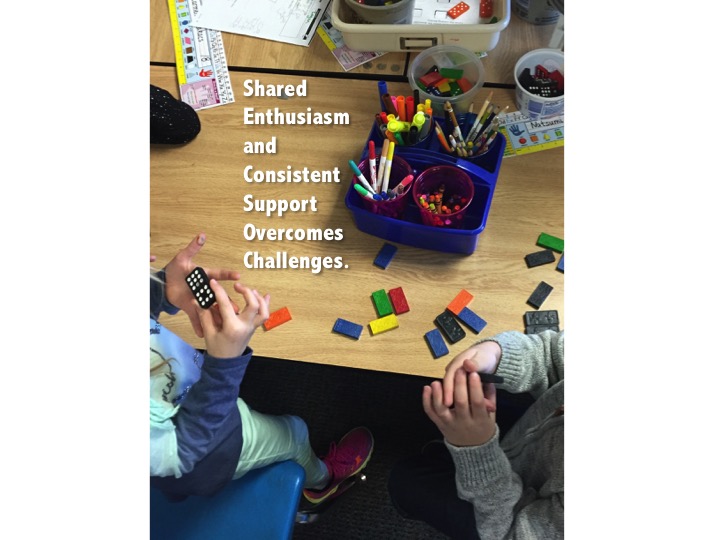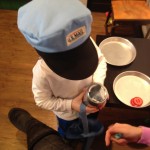I’m continuously working hard to build my capacity as a leader and a learner. I feel strongly that the two go hand in hand. Over the past couple of years I’ve been on an incredible journey that began with my transition from the classroom into the assistant principal’s office; I wasn’t called down…I was hired.
In fact, the process of being hired for that job catalyzed a paradigm shift for me…one that had been on the cusp of happening. I knew what direction I wanted to head in, I had a clear vision of the impact I was looking to make, and I was hopeful to find a school community who’s stakeholders would invite me to join them with that direction and vision in mind. Six weeks of an interview process forced me to dig just about as deep as I ever have. The authenticity with which the Rochester community listened, prompted, and processed my candidacy left me know choice but to bring myself back to the basics and begin to build from there.
I’ve since integrated that work into all areas of my life. Consequently, I’ve been engaged in the breaking down of my philosophy and my practice as an educator, a husband, and a father. I firmly believe that integration has enhanced my ability to affect positive progress as each, separately and simultaneously. Also, after consistently framing my efforts at learning and growth through this integrated lens for the past couple of years I continue along the path almost as a matter of habit.
Breaking myself down through critical reflection and processing hasn’t always been easy, in fact it’s uncomfortable and unpleasant at times. However, through the challenges and triumphs I’ve realized with great clarity that it’s also a highly effective practice for me. Holding myself up to a mirror built upon my core values (static and developing) also holds me accountable to the same.
To that end I’ve adopted multiple tools and strategies for consistent reflective practice, not the least of which has been my focus on regular reflective writing and the sharing of that writing as a learning and leadership boggler. I often feel like a kid in a candy store. The learning has been intense and exciting. With every passing day I discover new inputs that make my eyes widen and my mouth water for more.
As I moved from the assistant principal to the principal role this past summer, I was thrilled to be able to reflect on the partnerships that had been so easy to building in the wonderful district who’s stakeholders invited me in. One of Rochester Community Schools’ defining characteristics is that from top to bottom, from front to back, and form inside to out, I have not met a single person who seems anything less that eager and excited about collaboration. It’s an extremely community-centric community.
Our central office leadership has been involved in my learning and growth every step along the way. Through modeling, expressions of support and encouragement, and a clearly demonstrated value for shared leadership, my supervisors are building the kind of culture that I am aiming for at the building level. With their example and my reflective learning in mind I’ve narrowed my developmental goal to the building of partnerships that perpetuate joyful teaching and learning. I plan to maintain that goal indefinitely and regularly seek pathways to growth and indicators of achievement to celebrate along the way.
One of those pathways has been a research focus on building partnerships with the concepts of trust, buy-in, and shared leadership at the heart. Through a reflective self-study I’m seeking meaningful progress. I recently reached out to the faculty I serve for critical feedback. I worked hard to provide anonymity in an effort to maximize comfort and generate authentic feedback. I presented my request in the form of an activity that I called “Frankly.” Each faculty member was given a sheet of paper with the following prompt:
“Frankly”
A Gift to Seth
I know that asking for a gift is typically considered taboo. However, now that we’ve been together for over a month I would greatly appreciate it if you could thoughtfully write down some ideas and insights that you think might help me reach and exceed my potential as a building principal. In short, I’m asking for some critical feedback…and I’d greatly appreciate it if you give it to me straight. I’m hoping that the anonymity of this structure will provide a platform for each of you to express yourself candidly. When you finish, please fold the paper in half from top to bottom, then once more from side to side, and them it in the bowl. Thank you in advance!
I was specific about the folding because I wanted to do all I could to make sure that I wouldn’t be able to distinguish one from another. I left the room. Admittedly, I was a bit nervous, but I was excited too. I intended the activity as an opportunity for me to see my own practice through multiple other lenses (those of people I’m working to build trusting partnerships with). I knew that I would have to temper my pride. My hope was that I would get some real critical feedback and that I would be mature enough to process it with humility, authenticity, and true eye on leadership and learning.
The feedback came. Some of it stung and some of it reaffirmed my direction. All of it was meaningful. Initially, I planned to publish the feedback in list form. However, I’ve since thought better of that plan with confidentiality in mind. Alternatively, as I process the data I’ll communicate with my faculty to distinguish between acceptable and unacceptable publication options. I would like to share specifics in the hopes that others on intentional learning and leadership pathways might benefit.
In the meantime, without quoting any of the responses, the following are some broad strokes from the data that have already given me cause to adapt my practice, in some cases resulting in the integration of adapted systems and structures.
– I know that I’m trustworthy, but it’s impossible for those I serve to truly know the same without the development of genuine relationships. That takes time, patience, authenticity, and transparency.
– Follow through is critical to progress. Those I serve must know that I am going to do what I say.
– Messaging should be concise. Educators are busy people who don’t have time to linger.
– It takes time for people to feel comfortable being honest and open. I need to show my faculty that they’re safe in every interaction.
– People need to vent. I must foster a culture where frustrations can be processed in professional ways.
– Solutions are key to progress. Ongoing dialogue that has no end can halt progress. Decisiveness is an important attribute of effective leadership.
– Feedback is only meaningful when it can be heard. There is a balance between critical and compassionate.
– There is little more important in trusting collaboration than support. My faculty must know that I support them in their practice and in their growth.
– Everything that educators do boils down to teaching and learning as the two relate to student wellbeing and achievement…that must come through at all times.
– Perception is reality. My faculty must know that the ship is being steered with intention at all times.
Stay tuned for more reflective processing as I use this data in my efforts to build trusting partnerships with all stakeholders in my school community. I would love to hear any connected thoughts or idea in the comments section below. Your input is very much welcome and appreciated!
Live. Learn. Lead.

Dream Big. Work Hard. Be Well.









